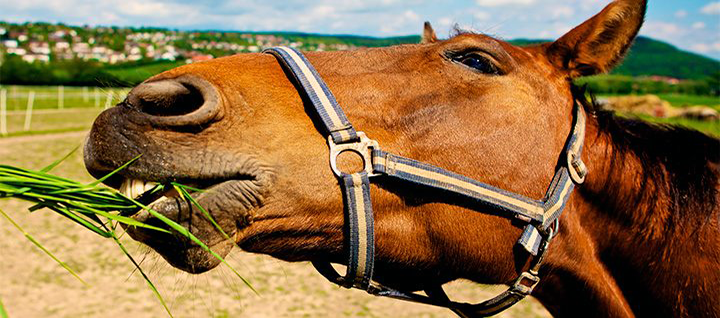
Aqui está a tradução completa do seu texto para o inglês, mantendo um tom claro e informativo:
Horse Feeding
A quality diet for horses is essential to ensure their well-being and health. In this post, we have put together a list of 16 best practices.
- Feed horses at regular times.
- Use feeders at the level of the shoulder blade (scapula).
- When feeders are too high, inhalation of feed dust increases, which also raises the risk of respiratory problems.
- Feed placed on the ground favors fecal contamination and waste; with contamination, intestinal parasitism increases.
- When feeding horses in loose groups, it is essential to separate gentle horses from aggressive ones, so all animals can eat and accidents are avoided.
When dietary changes are necessary, including forage (both type and amount), they must be made gradually over at least 4 to 7 days. A sudden increase in the amount of grain, or switching to another type of feed too quickly, can cause indigestion, laminitis, or colic.
Routinely observe the horses as they eat. Sudden changes in appetite may indicate that something is wrong with either the feed or the horse.
Do not provide moldy or very dusty feed, as it can cause chronic coughing, pulmonary emphysema, or bleeding.
The amount of feed should be calculated by weight, not by volume.
Provide at least 0.75 to 1 kg of forage per 100 kg of body weight, in the form of hay, cut grass, or high-quality pasture. Horses with access to pasture should graze for about four hours per day.
If the horse must work during the day, provide most of the forage at night, when it has more time to eat slowly and comfortably.
Cut grass can only be given if it is still fresh, free of dust and herbicides.
Horses have small stomachs and make better use of frequent meals. The maximum ration per meal should not exceed 3 kg. Ideally, feed three meals a day, spaced at least four hours apart.
- Before starting work with the horse, allow one hour after feeding, and likewise, allow one hour after finishing exercise before giving food or water. This ensures the horse returns to normal breathing and circulation.
- Add 50 ml of vegetable oil (cooking oil) twice a day to the ration. This procedure makes the horse’s coat shinier and supports digestion.
- Salt (sodium chloride) and mineral salt should always be available.
- Water temperature must be considered: very warm water does not quench thirst and may cause digestive atony, while very cold water can cause colic.
Note: These guidelines must be adjusted for each case, since differences in age, management, and workload of the horse should always be taken into account.



